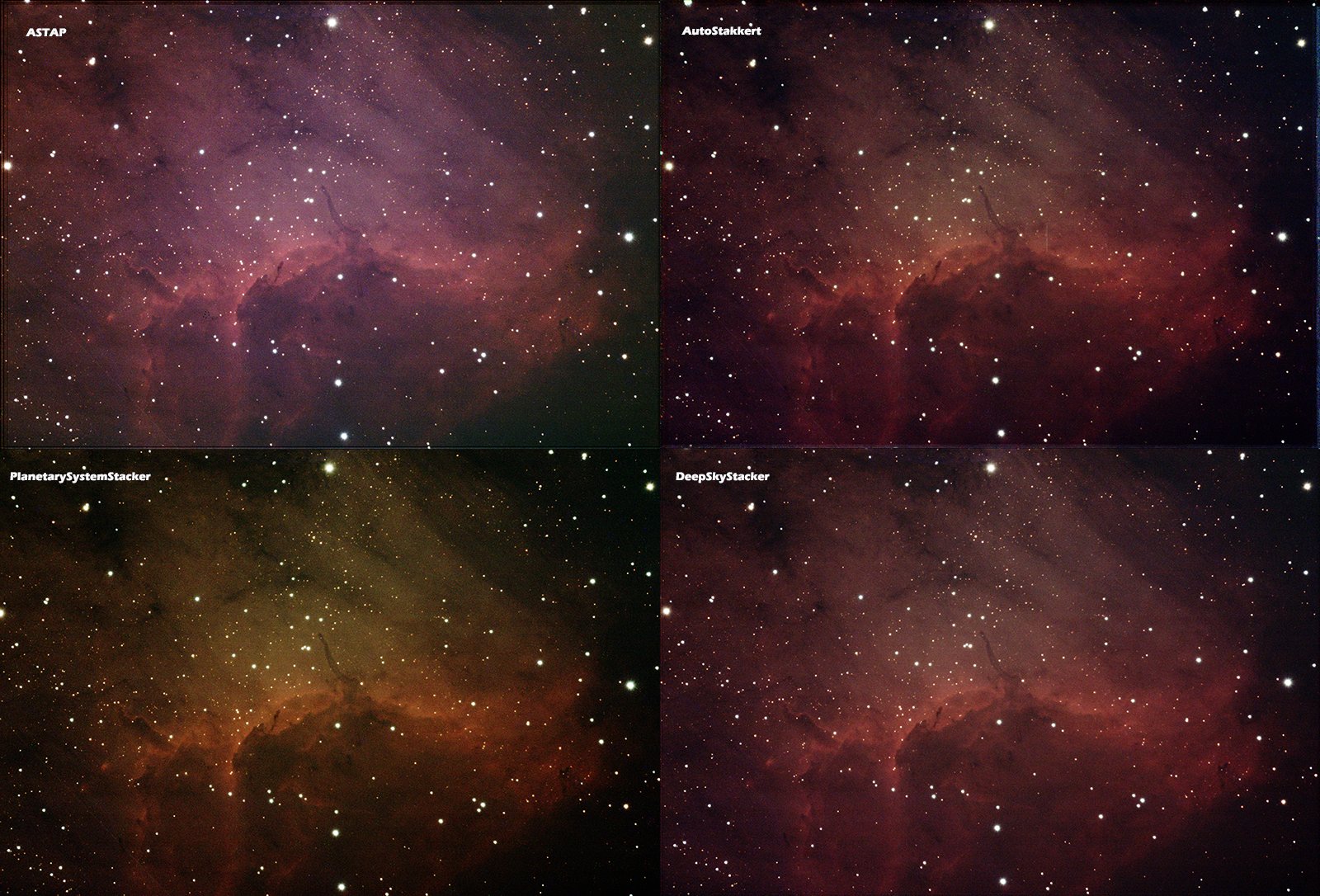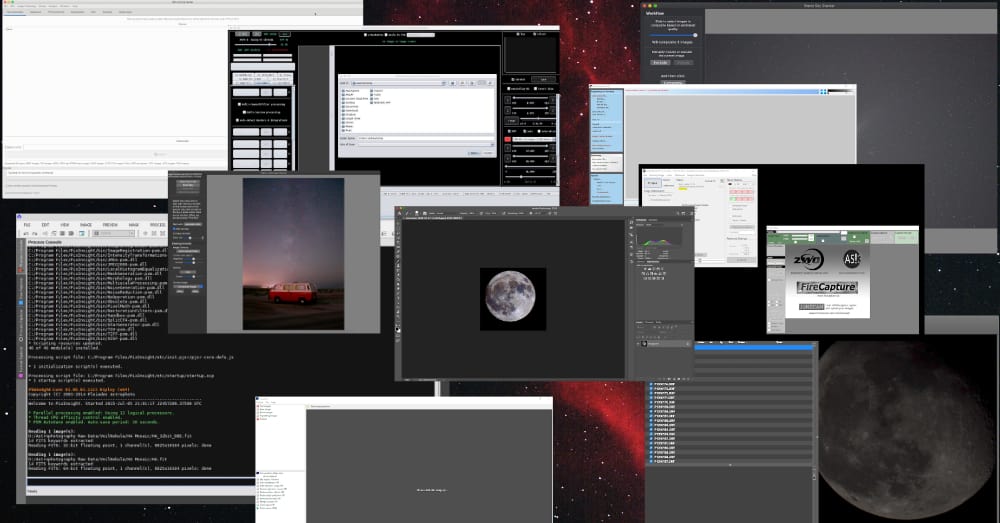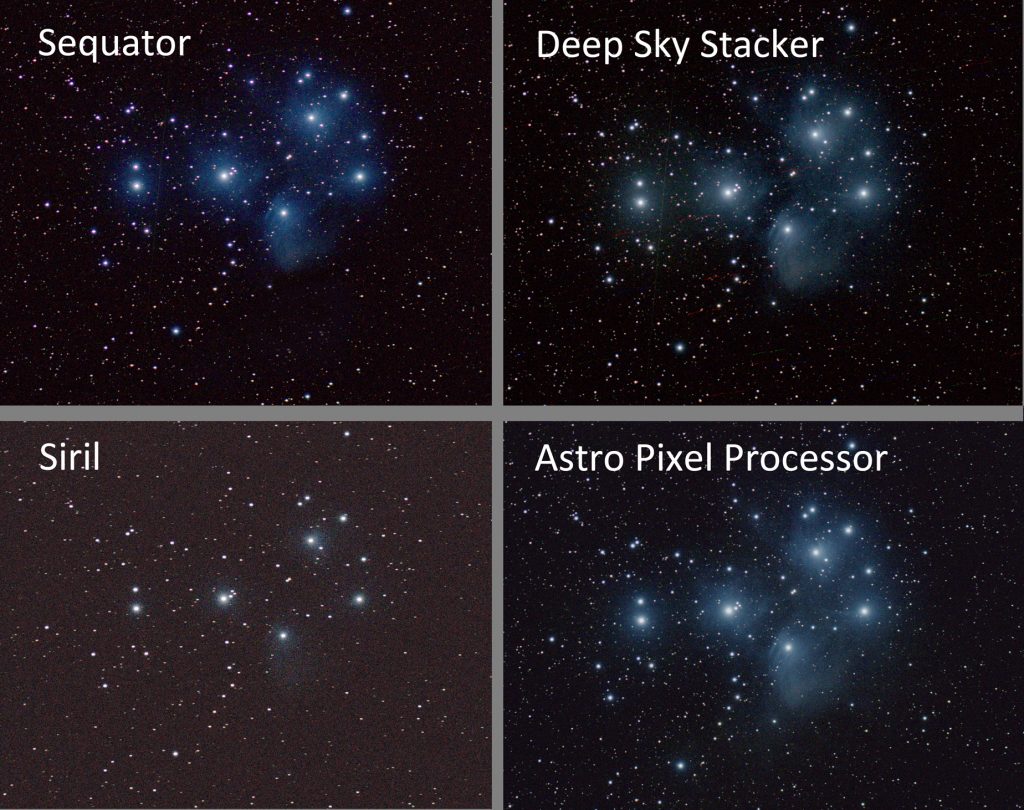

Best stacking software for astrophotography full#
The Canon RP currently sells for about $1000, which is a good value for a full frame mirrorless camera (in my opinion), and cheap enough for an “experiment.” Astronomical Filters Having anyone modify a camera body will certainly void the warranty and possibly make it unrepairable in the eyes of an authorized factory repair facility. Of course, an important concern was the cost of the camera body.

For my use, I’ve found the need to swap filters quickly is not important.

Other brands of adapters have subsequently become available, which allow filters to be mounted in filter drawers and conveniently and quickly swapped out. In addition, the thickness of the lens adapter allowed me to get (imported from Japan), an adapter that allows for the insertion of filters (58mm, threaded) as well as a 3-point tapered ring which allows the camera to be freely rotated and locked into any framing orientation. I wanted to have a camera modified for red-sensitive astrophotography, and by virtue of selecting a mirrorless camera body, I could get an Nikon F mount lens adapter, making it fully compatible with my existing camera lenses and telescopes. Why? One answer is that this camera wasn’t intended to replace any of my “normal” use cameras. In fact, I did a complete 180-degree flip and went with a Canon RP body (26 megapixels, full frame, mirrorless). However, I took this opportunity to also experiment with the mirrorless camera body experience. My Path: The Canon RPĪs a long-time Nikon shooter and having built a collection of F mount lenses, it would have been logical to select a modified Nikon body. But note that whatever replacement filter option is selected, the filter must match the factory filter so that the focal point is not changed, or standard lenses for that camera may not come to focus.
Best stacking software for astrophotography mods#
In addition, third-party mods allow the selection of a filter which allows more H-alpha light to pass through to the sensor than the factory-designed astro models, which use more aggressive IR cutoffs to keep daylight performance closer to the standard models. In fact, having a third-party modify a camera gives you more options such as to completely remove the IR filter to allow the possibility of shooting IR photos (blocking visible wavelengths) or even UV photos. The other option is to have a third-party camera or astronomy equipment dealer modify a camera to remove the standard IR filter and replace it with one that passes more of the H-alpha line. These do, however, have the advantage of including built-in daylight color balance and additional astrophoto firmware features, such as longer exposure capability. They are also “behind” the current models and more expensive than the standard models. Nikon D800a and Canon 60DA), They are built in limited production runs and are probably sold out as you read this. While normal daylight photos taken with such a camera can be re-balanced to appear “normal,” if exact standard color reproduction is necessary, a modified camera should not be used.Īlthough special factory production versions of commercial cameras exist (e.g. This is done by removing/replacing the IR blocking filter, which cuts a bit into the deep red end of the visual spectrum. When a camera is described as modified for astrophotography, it means that the response of the camera sensor has been extended further into the red end of the spectrum to pick up the astronomically important hydrogen-alpha (H-alpha) emission line. I also have a few dedicated astrophotography cameras in use.īut a couple of years ago, I decided to get a “consumer” camera modified for astrophotography. Second, while I have used a variety of brands of cameras (Sony, Panasonic, Canon, Pentax, Fuji) for travel and other purposes, my go-to cameras have been Nikons for “serious” shooting. Multiple Pathsįirst off, let me say that I’ve been taking astrophotos since the dinosaur age (back in the days of film). Beyond that, it’s difficult to recommend a specific brand and model because I don’t have every camera at my disposal, and we are blessed (cursed?) with a continuous stream of new and improved cameras. Of course, my first answer is to use the camera and lenses you already have. I’m occasionally asked to recommend a camera to get into astrophotography.


 0 kommentar(er)
0 kommentar(er)
